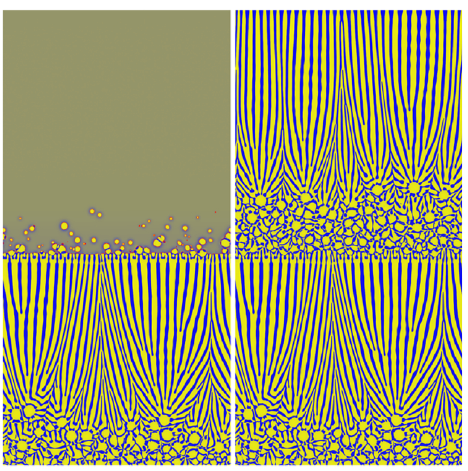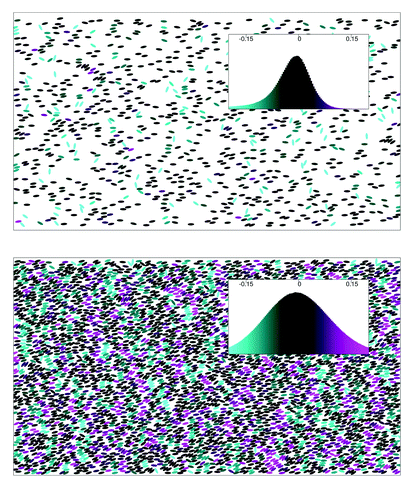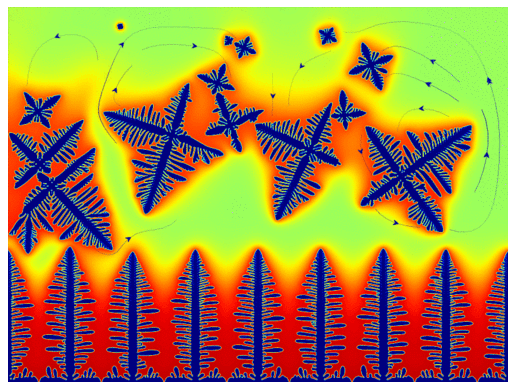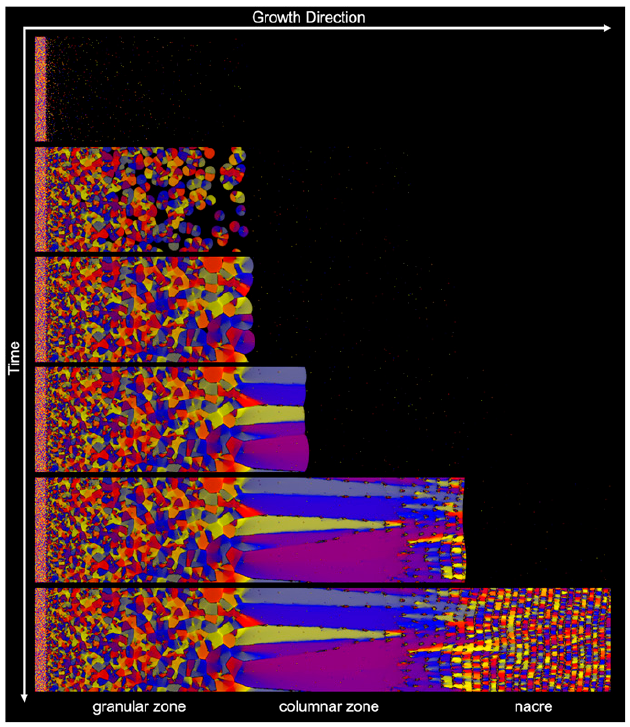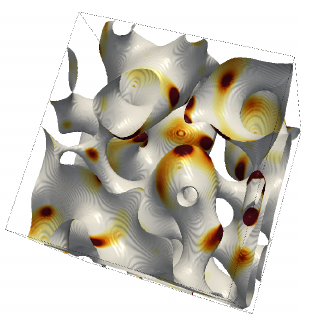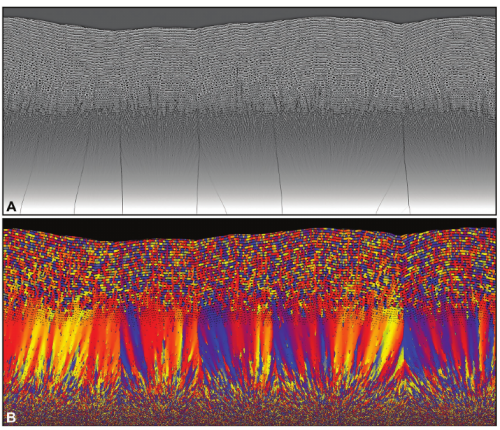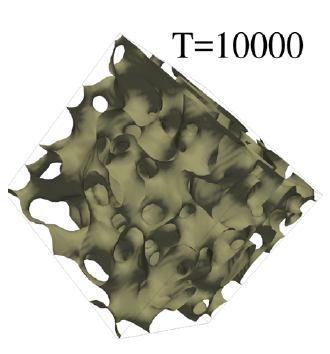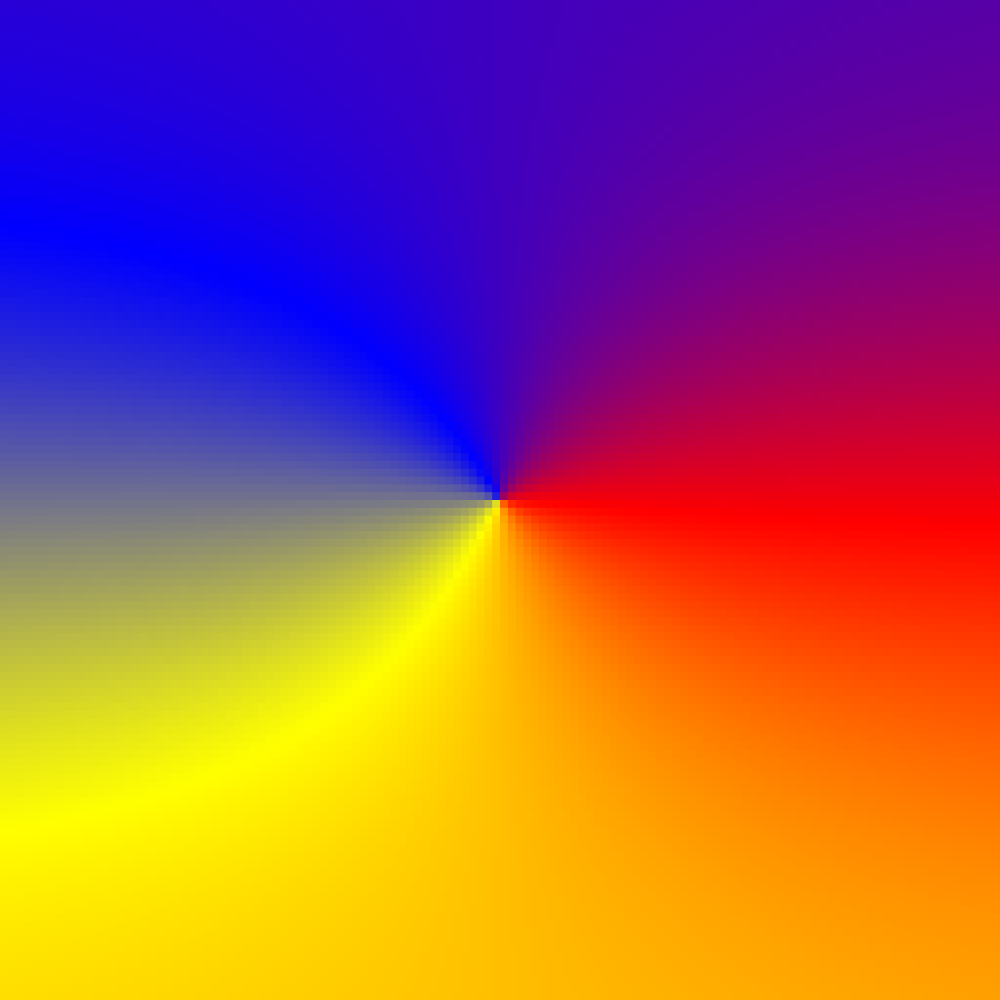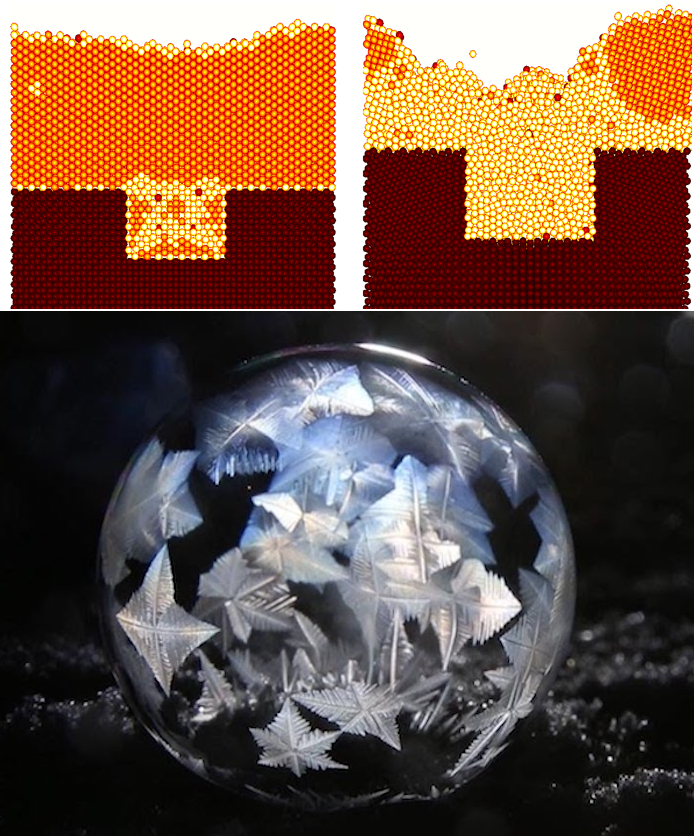
László Gránásy1,2, Gyula Tóth3, James A. Warren4, Frigyes Podmaniczky1, György Tegze1, László Rátkai1, Tamás Pusztai1
1Institute for Solid State Physics and Optics, Wigner Research Centre for Physics, P.O. Box 49, Budapest H-1525, Hungary
2BCAST, Brunel University, Uxbridge, Middlesex, UB8 3PH, United Kingdom
3Department of Mathematical Sciences, Loughborough University, Loughborough, Leicestershire, LE11 3TU, U.K.
4Metallurgy Division, National Institute of Standards and Technology, Gaithersburg, Maryland 20899, USA
We review how phase-field models contributed to the understanding of various aspects of crystal nucleation including homogeneous and heterogeneous processes, and their role in microstructure evolution. We recall results obtained both by the conventional phase-field approaches that rely on spatially averaged (coarse grained) order parameters in capturing freezing, and by the recently developed phase-field crystal models that work on the molecular scale, while employing time averaged particle densities, and are regarded as simple dynamical density functional theories of classical particles. Besides simpler cases of homogeneous and heterogeneous nucleation, phenomena addressed by these techniques include precursor assisted nucleation, nucleation in eutectic and phase separating systems, phase selection via competing nucleation processes, growth front nucleation (a process, in which grains of new orientations form at the solidification front) yielding crystal sheaves and spherulites, and transition between the growth controlled cellular and the nucleation dominated equiaxial solidification morphologies.
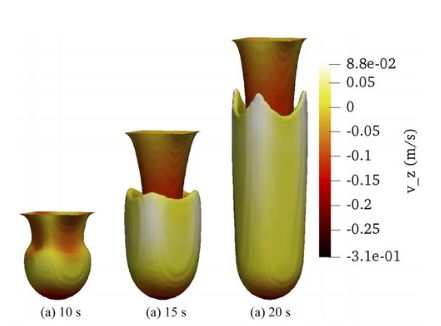 We report on two- and three-dimensional numerical simulations of Rayleigh–Taylor instabilities in immiscible fluids. A diffuse-interface model that combines the Cahn–Hilliard equation, governing the evolution of the volume fraction of one fluid, and the Navier–Stokes equations, governing the bulk velocity and pressure, is used. The study is limited to low Atwood numbers owing to the use of the Boussinesq approximation. The code is based on a pseudo-spectral method. A linear analysis is first performed in a two-dimensional case of Rayleigh–Taylor instability to confirm that the model very well captures this phenomenon in the case of inviscid or viscid fluids. One key aspect of this work is that the influence of the thermodynamic parameters related to the Cahn–Hilliard equation (interface thickness and mobility) is quantitively studied. Three-dimensional results of Rayleigh–Taylor instabilities in viscous fluids are then presented to show the possibilities of this modeling. We observe the effect of the viscosity and the wavelength of an initial single-mode perturbation on the mass transport during the nonlinear regime.
We report on two- and three-dimensional numerical simulations of Rayleigh–Taylor instabilities in immiscible fluids. A diffuse-interface model that combines the Cahn–Hilliard equation, governing the evolution of the volume fraction of one fluid, and the Navier–Stokes equations, governing the bulk velocity and pressure, is used. The study is limited to low Atwood numbers owing to the use of the Boussinesq approximation. The code is based on a pseudo-spectral method. A linear analysis is first performed in a two-dimensional case of Rayleigh–Taylor instability to confirm that the model very well captures this phenomenon in the case of inviscid or viscid fluids. One key aspect of this work is that the influence of the thermodynamic parameters related to the Cahn–Hilliard equation (interface thickness and mobility) is quantitively studied. Three-dimensional results of Rayleigh–Taylor instabilities in viscous fluids are then presented to show the possibilities of this modeling. We observe the effect of the viscosity and the wavelength of an initial single-mode perturbation on the mass transport during the nonlinear regime.


